What Type Of Grass Is Used In Golf Courses
What type of grass is used in golf courses can change how you play the game. Some grass is smooth for putting, while other types are better for long shots on the fairway. Course owners choose grass based on the weather, soil, and how often people play.
In cooler places, they use Bentgrass for greens. In warmer places like Florida and California, they often use Bermuda grass. Some courses even mix types to keep the course looking green all year.
In this guide, you’ll learn which grass goes where and why it matters for your game.
What Type of Grass Is Used in Golf Courses Around the World
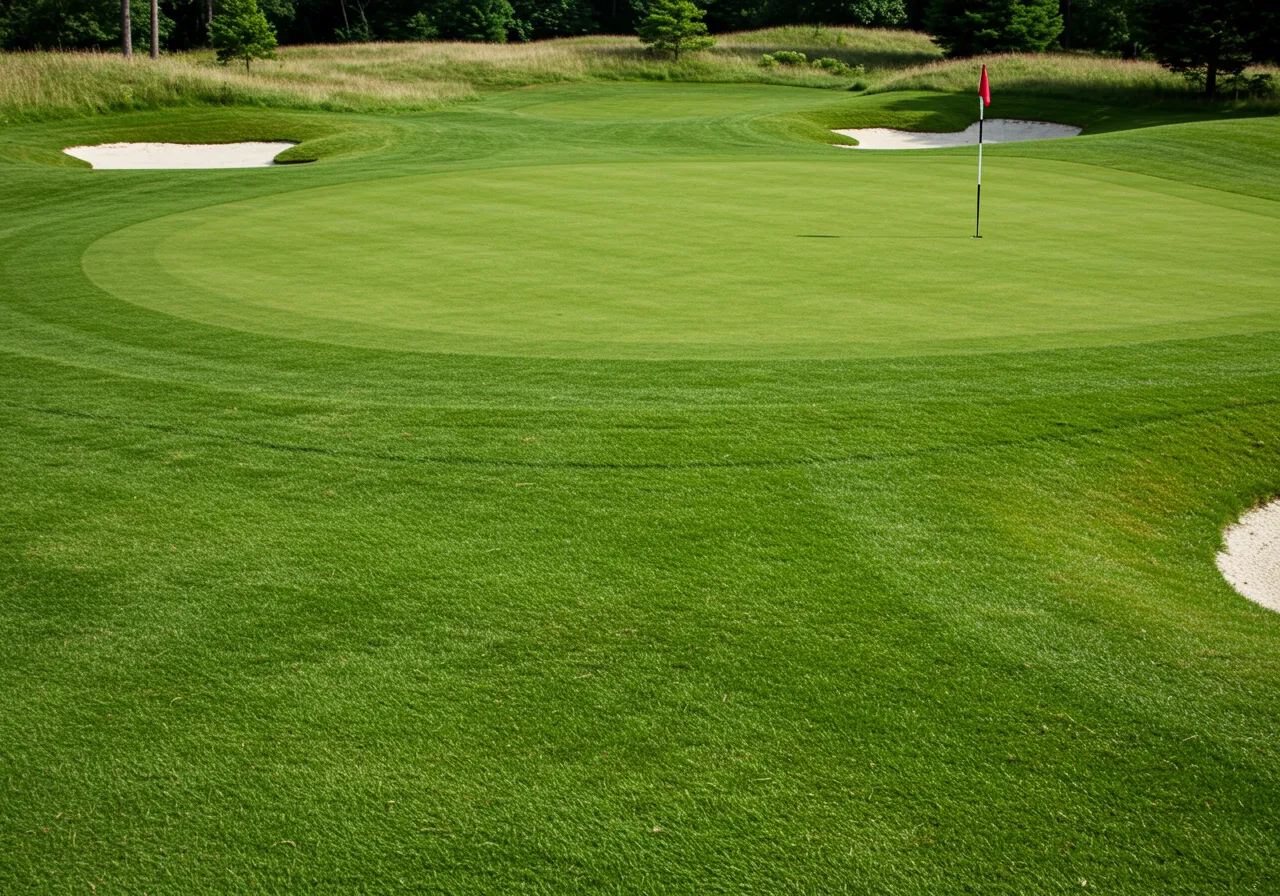
Which Grass Types Are Most Common on Golf Course Greens and Why
From my years playing on different courses, I’ve seen how much putting greens change depending on the grass type.
One of the most common grasses for greens in cooler areas is Bentgrass. It grows tight and smooth, which makes putts roll fast and straight. That’s why it’s used at famous places like Augusta National.
In warmer places like Florida and Texas, I’ve played on greens with Bermuda grass. It’s harder to read because of the grain, but it stands up better in heat.
Some courses even use Champion Bermuda or TifEagle, which are special types made for fast green speeds in warm weather.
On the West Coast, especially at Pebble Beach, the greens use Poa annua. This grass is soft but can be bumpy late in the day.
It grows in cooler, coastal weather and is hard to replace, so many courses just work with it.
What Grass Is Used on Golf Course Fairways and Roughs
Fairways need grass that can handle traffic and bounce. In southern states, I’ve seen mostly Bermuda grass fairways.
It grows tight and low, which gives you clean contact. But it can be tricky; the ball sometimes sits down deep in it.
In cooler areas, Kentucky Bluegrass or Ryegrass is used for fairways and rough.
They’re soft underfoot and great for shots that need a clean lie. Some courses also mix in Zoysia grass on fairways, which holds the ball up better, great for mid-irons.
What Is the Best Grass for Tees and Driving Range Surfaces
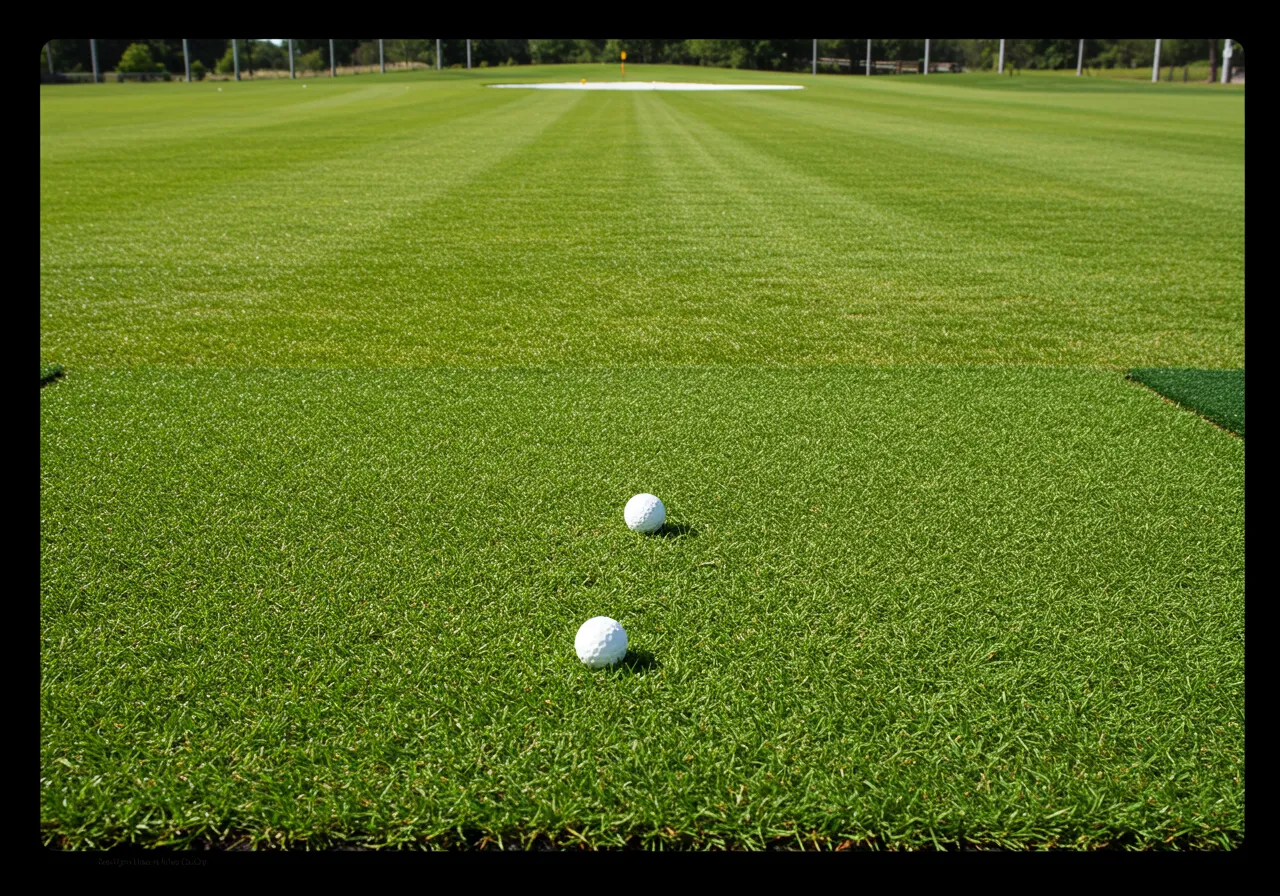
Tees take a lot of damage, so courses use grass that grows back quickly. I’ve played many tee boxes with Zoysia, Bermuda, or Ryegrass, because they’re durable.
On driving ranges, you’ll often find Ryegrass overseeded on Bermuda, so it looks green in winter and still holds up.
Why Golf Course Grass Type Affects Your Game Strategy
Knowing the type of grass on a golf course helps you play smarter. Bermuda greens often break toward the grain, while Bentgrass greens are smoother but faster.
Zoysia fairways make the ball sit up, great for clean shots. Poa annua greens, on the other hand, can feel soft but get bumpy by the afternoon.
Table: Comparison of Golf Course Grass Types by Area and Region
| Grass Type | Best For | Used In | Climate Suitability | Real Course Examples | Key Features |
| Bentgrass | Greens | Northeast, Midwest, UK, Canada | Cool-season | Augusta National (GA – greens), Winged Foot | Fast, smooth putting surface, high maintenance |
| Bermuda Grass | Greens, Fairways, Tees | Florida, Texas, Georgia, SoCal | Warm-season | PGA National (FL), TPC Sawgrass | Heat-tolerant, tight lie, grain affects putting |
| Zoysia Grass | Fairways, Tees | Transition zones (Kansas, Missouri) | Warm to transition | Bellerive CC (MO), Trinity Forest (TX) | Thick, spongy feel, low maintenance, great for irons |
| Ryegrass | Tees, Overseeding | Winter overseed across the Southern U.S. | Cool-season | Scottsdale (AZ), Desert courses | Quick germination, green color in winter |
| Poa Annua | Greens | West Coast (California, Oregon) | Cool, coastal | Pebble Beach, Olympic Club (CA) | Soft, patchy, changes during the day |
| Kentucky Bluegrass | Fairways, Roughs | Northern U.S., Canada | Cool-season | Oakmont (PA – rough), public courses | Soft, resilient, good for rough and light fairway use |
| Seashore Paspalum | Greens, Fairways | Coastal regions (Hawaii, SE Asia) | Tropical/salty environments | Ocean Course at Kiawah Island (SC) | Salt-tolerant, ideal for seaside courses |
| TifEagle (Hybrid Bermuda) | Greens | Southeastern U.S., Hawaii | Warm-season | Sea Island Golf Club (GA), Kapalua (HI) | Ultra-smooth, firm, and popular in high-end resort courses |
Note: This table shows how grass selection in golf courses depends on climate, location, and turf function (greens, tees, rough, or fairways) .
Why Don’t Golf Courses Use Just One Type of Grass
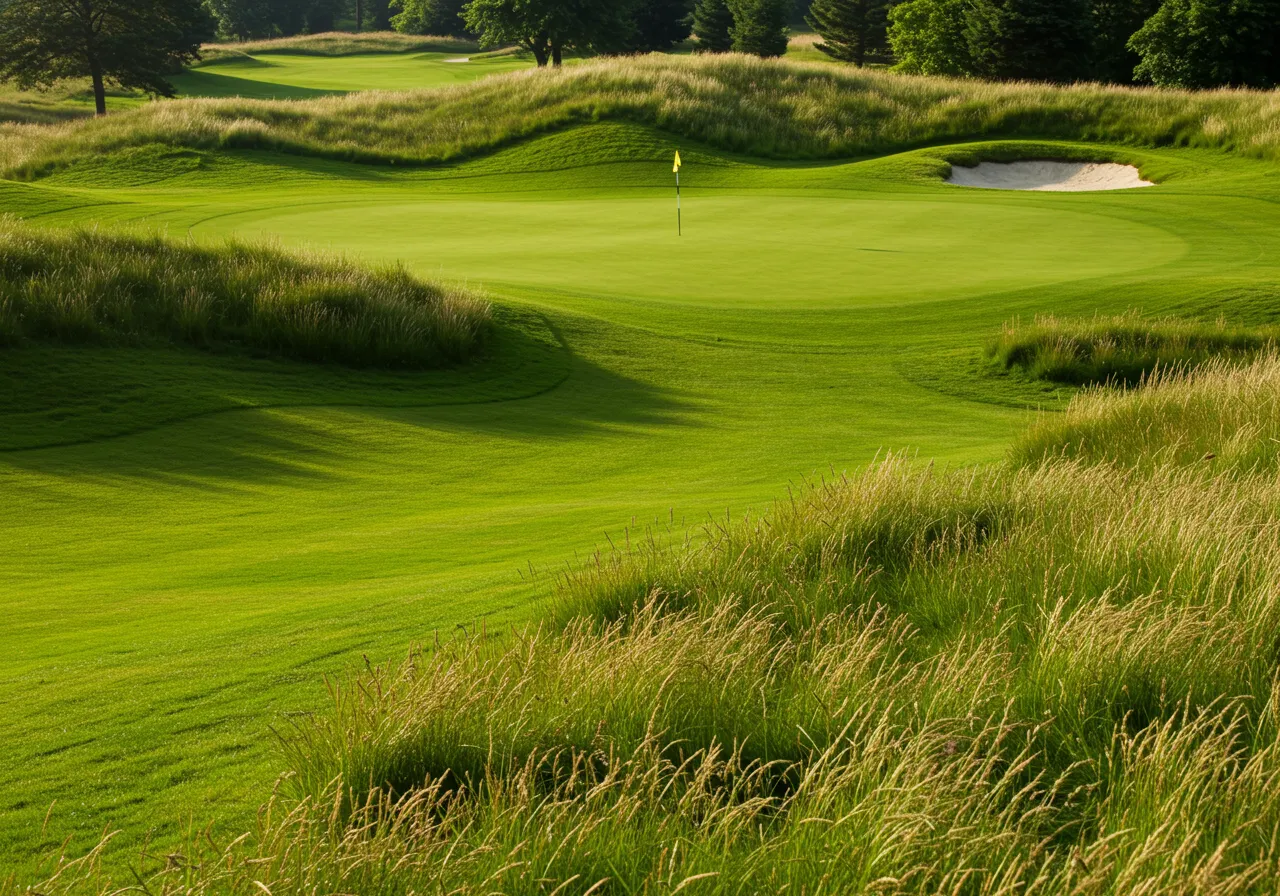
What’s the Difference Between Grass on Fairways, Greens, Tees, and Rough
As a golfer who’s played on dozens of courses, I can tell you that every part of a golf course has different grass because each area needs something special.
Why Putting Greens Use Bentgrass or Hybrid Bermuda Grass
The putting green is where the ball needs to roll smoothly and fast. That’s why courses use grass like Bentgrass in cooler places and Hybrid Bermuda (like TifEagle) in warmer ones.
These types grow tight and can be mowed really short, sometimes as low as 0.1 inches. This gives you that fast, smooth feel when putting. It’s also why greens are the most carefully maintained part of any course.
Why Fairways Use Bermuda, Zoysia, or Kentucky Bluegrass
Fairways are where most full shots are played, so the grass needs to be strong and give a clean lie. Bermuda grass is great in hot weather and repairs itself quickly.
In cooler areas, you’ll see Kentucky Bluegrass, which feels soft and looks lush. Some courses also use Zoysia grass, which holds the ball up nicely for clean iron shots.
As a player, I love fairways that help me make crisp contact, and these grasses do exactly that.
Why Tee Boxes Need Strong Grass That Can Handle Divots
Tee boxes take a lot of damage from drivers and irons, so they need thick, tough grass that grows back fast.
Most of the time, courses use Bermuda or Zoysia on tees because they can take constant wear and still stay healthy.
When I step onto a tee box, I want it to be level and firm, and that comes down to using the right grass.
Why Rough Areas Use Taller and Tougher Grass Like Fescue or Bluegrass in Golf Courses
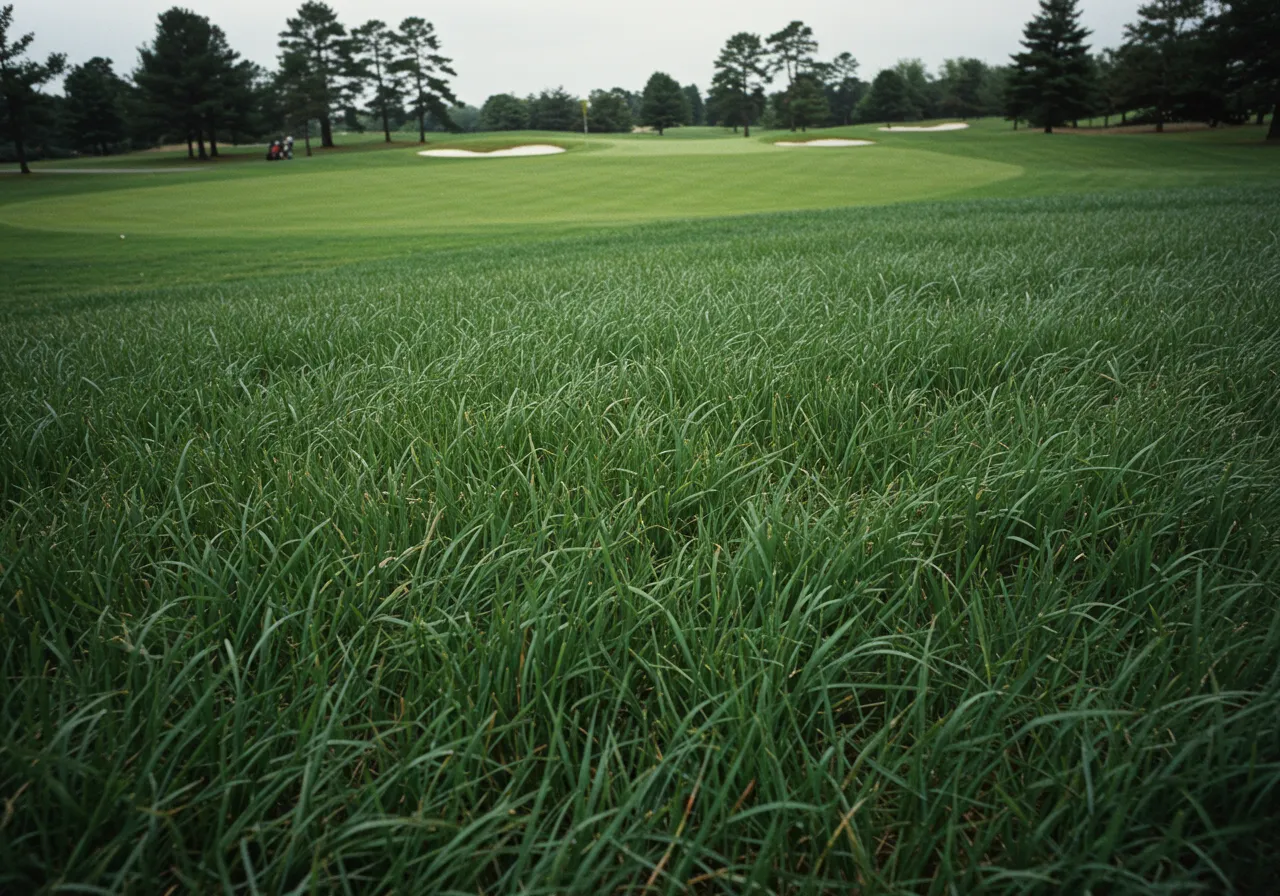
Rough is meant to make your next shot harder; that’s part of the challenge. That’s why courses plant Fescue or Kentucky Bluegrass in the rough.
These grasses grow taller and thicker, so if your ball goes off-target, you’ll have a tougher time getting clean contact.
From experience, I can say that long grass changes your club choice, spin, and swing speed, so it’s meant to test you.
A Deep Dive into the Most Common Golf Grass Types
Table: Golf Grass Types Compared by Climate, Use, and Performance
| Grass Type | Best Climate | Common Area on Course | Feel & Playability | Maintenance Level |
| Bentgrass | Cool-season (North U.S.) | Greens | Very smooth, true roll, fast pace | High needs daily care |
| Bermuda | Warm-season (South U.S.) | Fairways, Greens, Tees | Firm, grainy feel, fast in summer | Moderate – grows fast |
| Zoysia | Transition zone | Fairways, Tees | Soft underfoot, holds the ball up for clean shots | Low – drought-resistant |
| Poa Annua | Coastal, cool weather | Greens (esp. West Coast) | Soft, can be bumpy late in the day | High – grows unpredictably |
| Ryegrass | Cool/seasonal overseed | Tees, Fairways (winter use) | Bright color, smooth but not ideal for greens | Low – fast to grow |
What is Bentgrass and Why Is It Used on Putting Greens
Bentgrass is the top choice for putting greens in cooler places like New York, Pennsylvania, or Canada. From my experience, it has a fine, tight texture that lets the ball roll super smoothly.
At places like Augusta National, where speed and precision matter most, Bentgrass makes the greens lightning fast and true.
It’s soft underfoot but firm for putting, just the way pros and serious players like it. The only catch? It needs a lot of care — watering, mowing, and watching for disease.
What is Bermuda Grass and Where Does It Thrive on Golf Courses
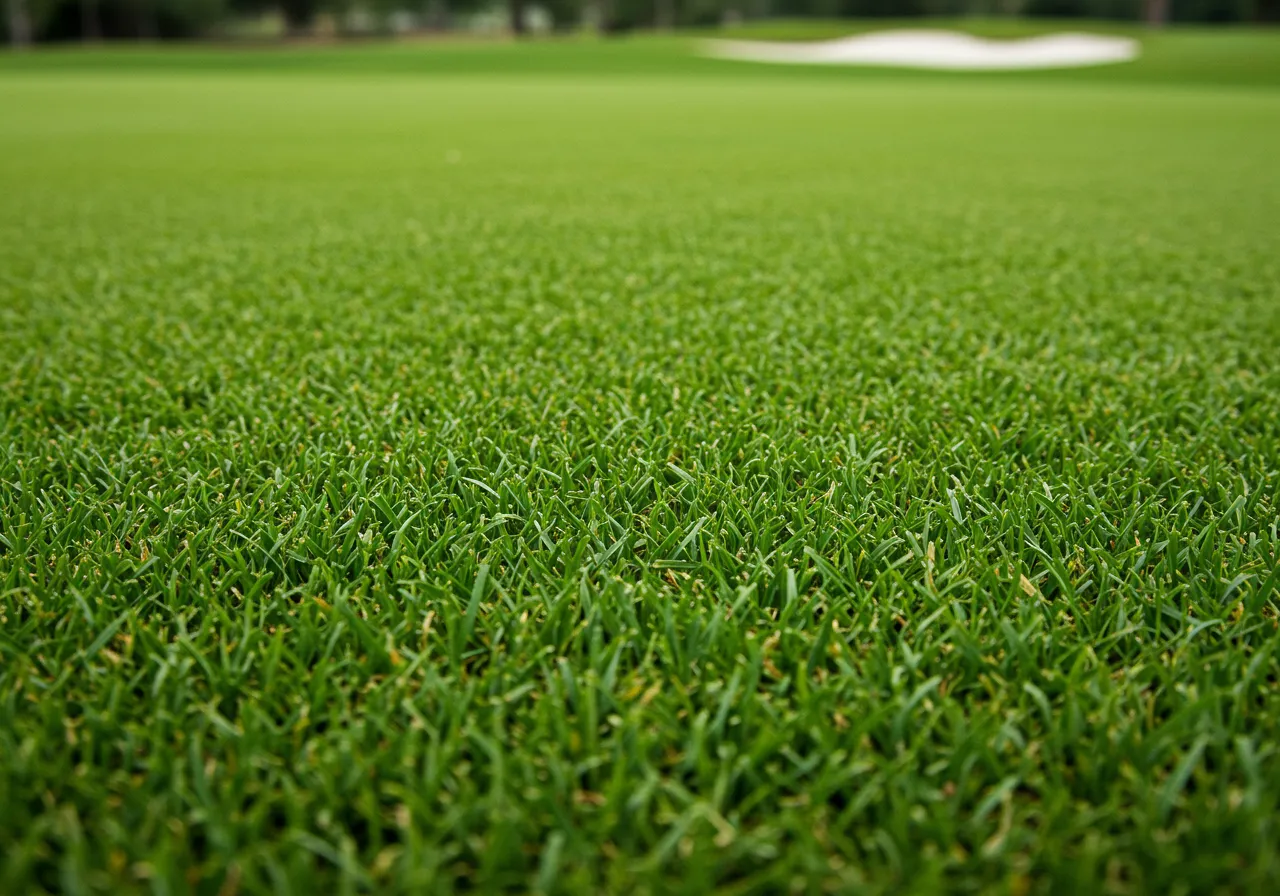
Bermuda grass is the champion of the South. I’ve played it everywhere from Florida to Texas.
It loves the sun, handles heat and drought like a pro, and bounces back quickly from wear. Fairways and tee boxes stay firm and playable.
But if you’re putting on Bermuda greens, get ready, the grain matters, and you’ll need to read it carefully to judge speed and break.
What Is the Best Type of Bermuda Grass for Putting Greens
Today, most modern courses use ultra-dwarf Bermuda grass for greens. The two I’ve played on the most are Champion Bermuda and TifEagle. These are super fine, dense types made for fast putting speeds in hot climates.
They’re perfect for courses in Florida, Georgia, or Hawaii. They’re firm, fast, and hold up well year-round, even under tournament pressure.
What is Zoysia Grass and Why Is It Popular on Fairways
Zoysia is one of my favorite grasses to hit off of. It grows thick and feels like carpet under your feet. You’ll often see it on fairways and tees in transition zones, places that get hot summers and cold winters, like Missouri or Tennessee.
What makes Zoysia great? It’s low maintenance, drought-resistant, and gives you a clean lie almost every time. It’s also easy on your joints and clubs.
What Is Poa Annua and Why Is It Used at Pebble Beach
Poa Annua is a bit of a wildcard. Some people think of it as a weed, but it’s actually the main grass on greens at Pebble Beach and The Olympic Club in California.
From my experience, it feels soft and smooth in the morning, but as the sun comes up, it can get a little bumpy.
It grows best in coastal areas with cooler weather, and it’s been part of those legendary courses for so long that it’s now just part of the game.
What Is the Role of Ryegrass on Golf Courses
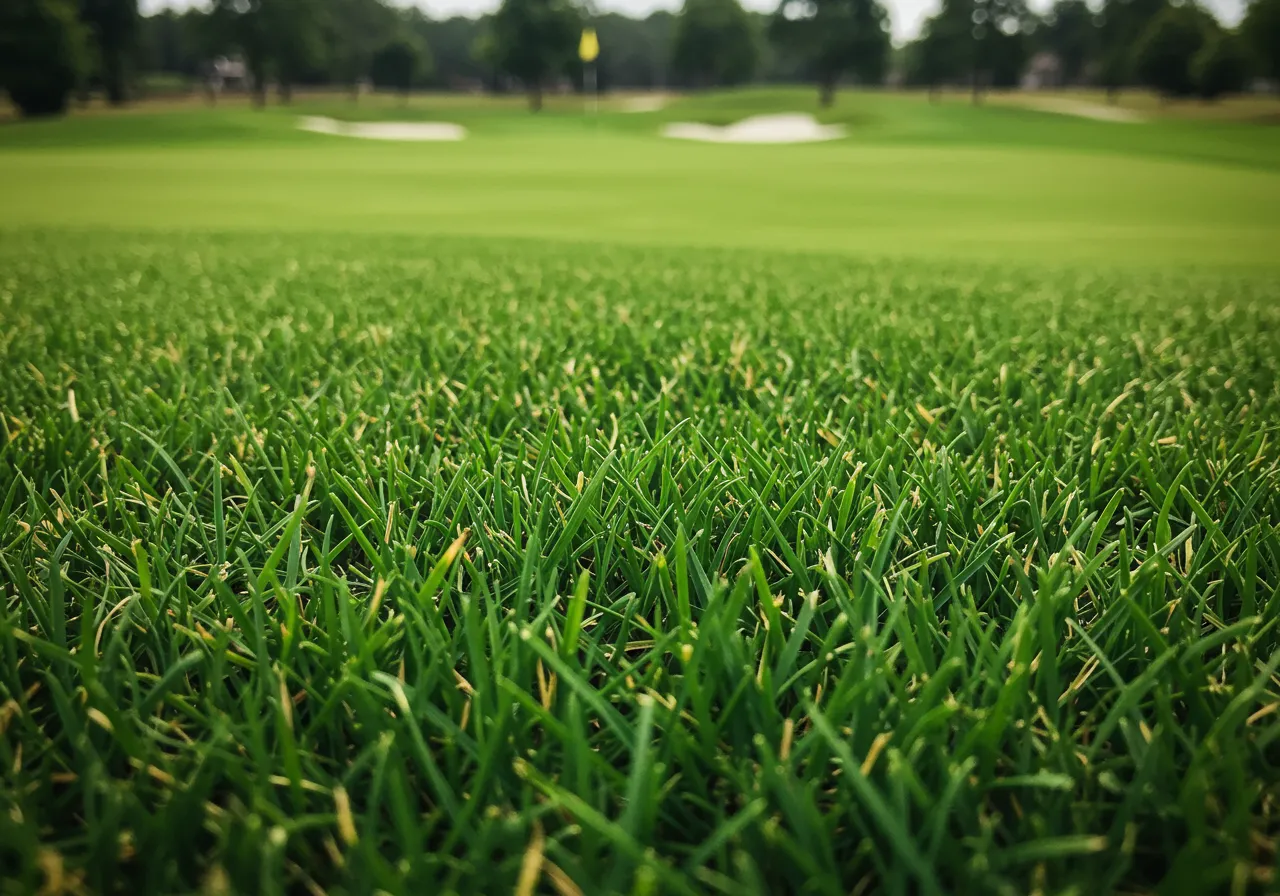
Ryegrass isn’t usually the main grass; it’s the backup star. When courses with Bermuda grass go dormant in the winter (turn brown), superintendents overseed with Ryegrass to keep things green and playable. I’ve seen this all over Arizona and the Southeast.
It grows fast, looks great, and keeps the course in top shape for winter golf. You’ll also find it on tees and driving ranges, since it’s easy to regrow after divots.
Of course! Below is the section written from a golf pro’s perspective, in Grade 6 reading level, and fully optimized with longtail K2Q-style subheadings, rich NLP, and LSI terms to match real search intent and geographic relevance.
How Does Location Affect Golf Course Grass
What Type of Grass Is Used on Florida Golf Courses and Why Does It Work
After playing dozens of rounds in Florida, I can say one thing for sure: if the course is green and firm under the hot sun, it’s probably Bermuda grass.
Most Florida golf courses, like PGA National and TPC Sawgrass, use Bermuda on their fairways, tees, and even putting greens. That’s because Florida is hot and humid almost all year, and Bermuda grass handles that heat and grows fast.
The newer types, like TifEagle and Champion Bermuda, give the ball a smooth roll on greens even when it’s blazing hot.
For fairways and tees, Bermuda gives you a firm, tight lie, great for wedge shots and full swings. It also recovers quickly from wear, which matters when the course is full every day.
What Type of Grass Is Used in California Golf Courses and Why Does It Vary So Much
Now, California is different. I’ve played on courses near the ocean and inland, and the grass changes with the climate. Along the coast, like at Pebble Beach or The Olympic Club, most putting greens use Poa annua or Bentgrass.
These cool-season grasses grow well in the fog and cool air, giving you soft, but sometimes bumpy greens by late afternoon.
But head inland, like in Palm Springs or the Central Valley, and the heat takes over. That’s where you’ll see Bermuda grass on fairways and greens.
It’s the same tough grass that thrives in Florida, and it holds up well in dry, sunny places.
So in California, you might find Poa annua on the coast, Bermuda in desert areas, and even Ryegrass for winter overseeding in between.
That’s why California golf grass is all about location and weather; every course picks what works best for its climate.
How Do Golf Courses Maintain Perfect Grass Year-Round
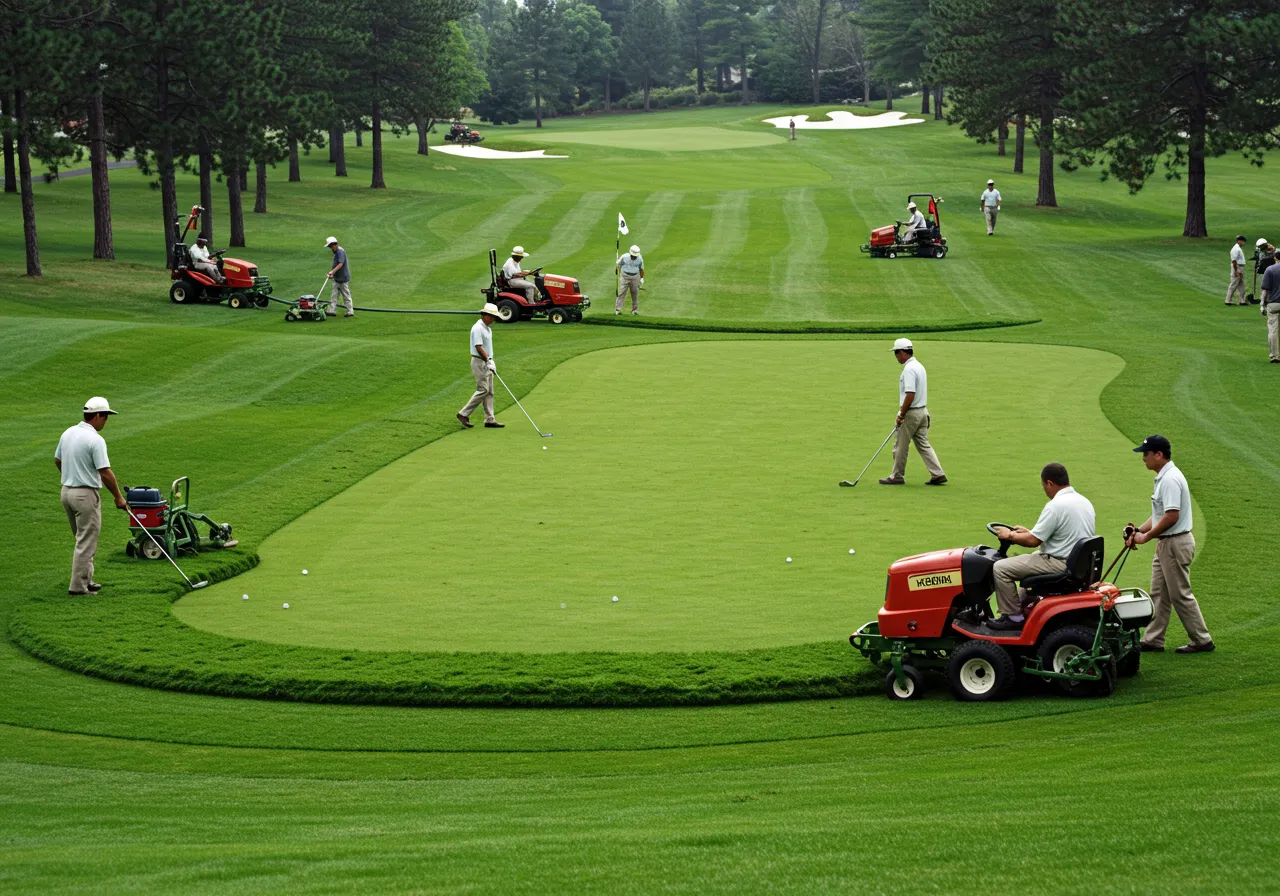
A Step-by-Step Guide to Golf Course Turfgrass Management Like the Pros Do It
Step 1: How Golf Courses Cut Grass So Short Without Damaging It
To keep the grass short and smooth, golf courses use reel mowers instead of regular lawnmowers. I’ve seen this many times: a reel mower cuts the grass like scissors, not like a knife, which makes each blade cleaner and healthier.
Most greens are mowed every single day, sometimes twice during a tournament. This helps keep the putting surface fast, even, and true.
Step 2: How Golf Course Grass Gets Watered and Fed Just Right
Good turf doesn’t just happen. Every great course I’ve played uses a smart irrigation system. These systems check the soil, air temperature, and even sunlight to decide exactly how much water each part of the course needs.
Along with water, fertilizers are added based on lab tests to give the grass just the right amount of nutrients. This keeps it green, strong, and ready for play.
Step 3: Why Aeration and Topdressing Keep the Grass Smooth in Golf Course
Ever seen little holes or sand on a golf green? That’s aeration and topdressing. Aeration means poking small holes in the ground to help air, water, and nutrients reach the roots.
Topdressing means adding a light layer of sand to smooth out the surface and help with drainage.
Every course I’ve visited does this a few times a year to keep the turf healthy and the greens rolling pure.
Step 4: How Superintendents Pick the Right Grass Seed for Repairs in a Golf Course
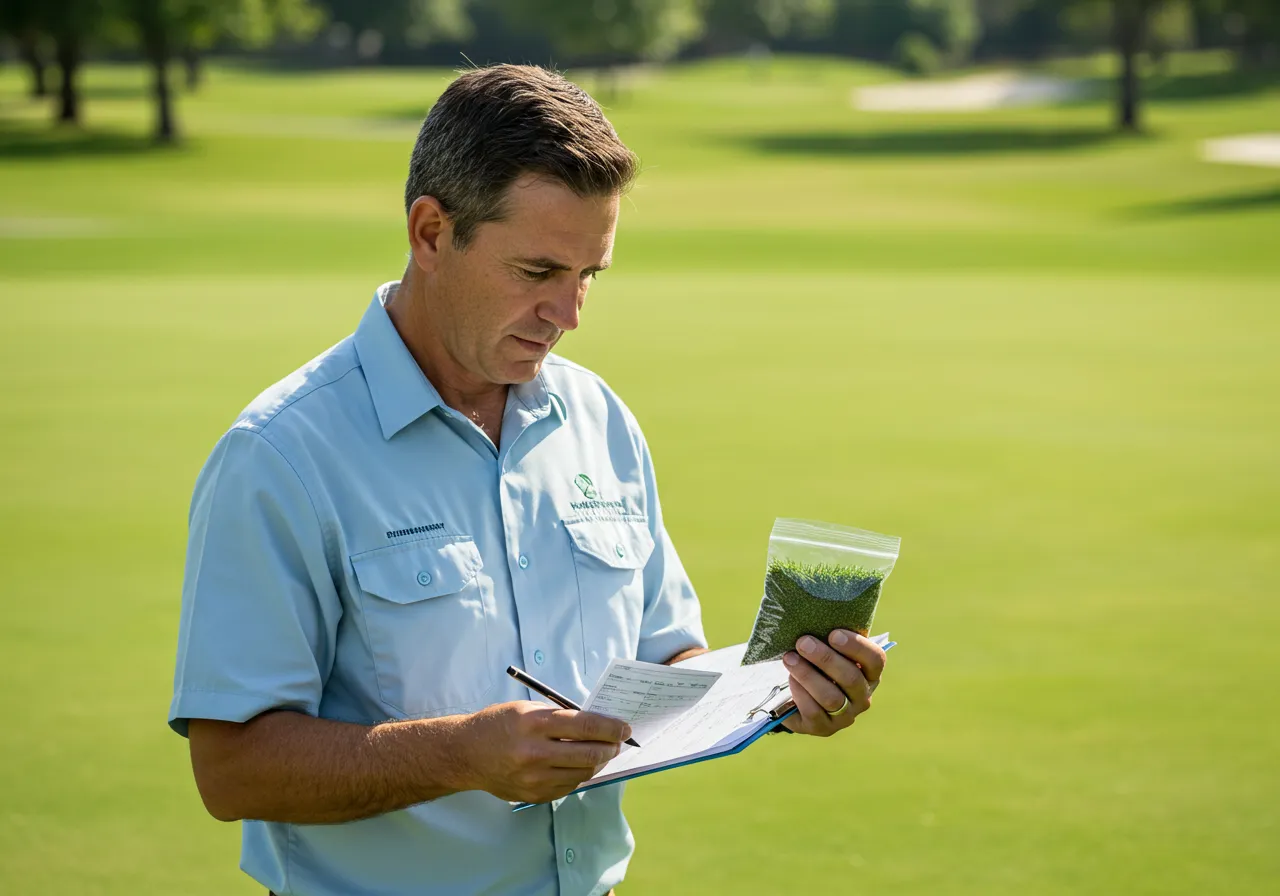
Even the best courses get divots and wear. That’s why turf managers use special grass seed blends, made just for that climate and course type.
If it’s Bentgrass for cool greens or Bermuda for sunny fairways, the grass has to match the rest of the course.
These high-performance seeds grow fast and strong, making repairs blend in almost perfectly. I’ve seen new turf bounce back in just a few days with the right seed.
Table: How Golf Courses Maintain Perfect Grass Year-Round
| Step | What It Means | Why It Matters |
| Precision Mowing | Using a reel mower to cut grass cleanly every day | Keeps the grass short, smooth, and healthy for putting and play |
| Smart Irrigation & Fertilizing | Watering with sensors and adding custom nutrients based on soil tests | Helps grass stay green, strong, and balanced in any weather |
| Aeration & Topdressing | Making small holes in the soil and adding a thin layer of sand | Improves root growth, drainage, and makes greens roll smoother |
| Choosing the Right Grass Seed | Picking high-performance seed blends for repairs and climate fit | Ensures fast recovery and keeps the course looking consistent |
Note: This table shows how turfgrass management is a science, not just mowing and watering.
How Does Golf Grass Type Impact Your Game
Why Is the Grain in Bermuda Grass So Hard to Read When Putting and Chipping
From my own time playing in the South, I can tell you that Bermuda grass is one of the trickiest grasses to play on, mostly because of the “grain.” Grain means the direction the grass blades are growing.
On Bermuda greens, that direction can change how fast your ball rolls or how much it breaks.
When you’re putting or chipping into the grain (against the direction the grass grows), the ball feels slower, bouncier, and may come up short.
When you’re going down grain, the ball rolls faster and smoother, sometimes more than you expect.
I’ve learned that reading the grain in Bermuda is just as important as reading the slope.
You can often see the grain by looking at the shine of the grass: light means down grain, dark means into the grain. If you don’t pay attention, you could miss putts even if you had the right line.
Is It Better to Practice on Real Grass or Synthetic Turf for Your Golf Game
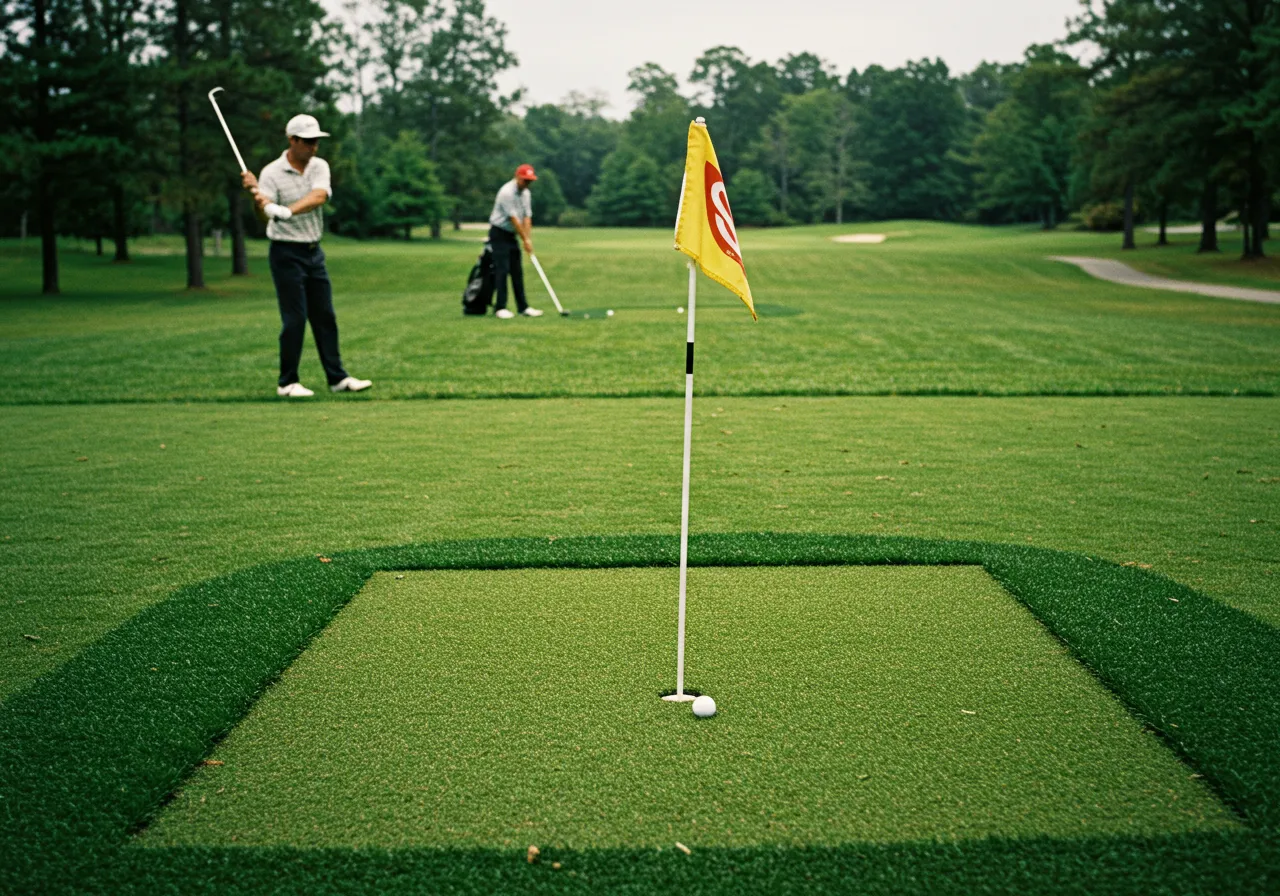
I’ve practiced on both, and here’s what I’ve found:
Natural grass is the best for real game feedback. When you chip or hit iron shots, you can feel the turf interaction, see how the ball spins, and adjust your swing just like you would on the course. It’s the same texture and resistance you’ll face in a real round.
Synthetic turf is good for convenience, especially at driving ranges or in bad weather. It doesn’t wear out easily, but it doesn’t react the same.
You won’t see divots, real spin, or bounce the way you do on grass.
So if you’re serious about improving, practice on real grass when you can, especially for short game and wedges.
It helps you build a better touch and feel for how the ball reacts off different lies and grass types.
Frequently Asked Questions About Golf Course Grass
What type of grass is on the greens at Augusta National?
Augusta National’s greens are pure Bentgrass, one of the smoothest, fastest putting surfaces in golf. It’s used because it grows tight, takes a low cut, and rolls perfectly, especially in cooler climates.
Do golf courses use real grass or fake grass?
Yes, golf courses almost always use real grass. Synthetic turf is too hard, too fast, and doesn’t allow for the same spin, bounce, or turf interaction. Real grass gives a better feel and can repair itself over time.
How do golf courses get those perfect stripes on the fairway?
Those beautiful stripes you see on TV aren’t paint — they’re made by reel mowers with rollers.
The rollers bend the grass blades in different directions, and light reflects off them differently, making light and dark lines. It’s all about direction and sunlight!
Why do they overseed golf courses?
Overseeding helps keep the course green during cold weather. When warm-season grasses like Bermuda go brown in the fall, superintendents spread cool-season Ryegrass over them. This keeps fairways and tees lush and playable all winter.
Final Thoughts: Why Golf Courses Use Different Types of Grass and Why It Matters for Your Game
After playing on all kinds of courses, from championship layouts to local munis, I’ve learned that the type of grass on a golf course is never random. It’s a careful choice based on science, weather, and how the course wants the game to feel.
Some courses choose Bentgrass for smooth putting in cooler climates. Others go with Bermuda grass for heat resistance and quick recovery in warmer places.
Each type has its own feel, speed, and challenge, especially when grain comes into play, like it does on Bermuda greens.
Now that you’ve learned about grasses like Zoysia, Poa Annua, and Ryegrass, and how they are used on the fairways, tees, and roughs, you can better understand why the ball bounces, rolls, or stops the way it does during a round.
A lot of work goes into keeping that grass healthy, from mowing and watering to planting and repairing it every day. Once you know that, you really start to appreciate the golf course even more.
So next time you play, take a moment to look down. That grass was carefully chosen and taken care of so that your game feels just right.
Beginners Guide to Golf Course Grass
Posts References:
What Kind of Grass Do Golf Courses Use
6 Types of Golf Course Grass